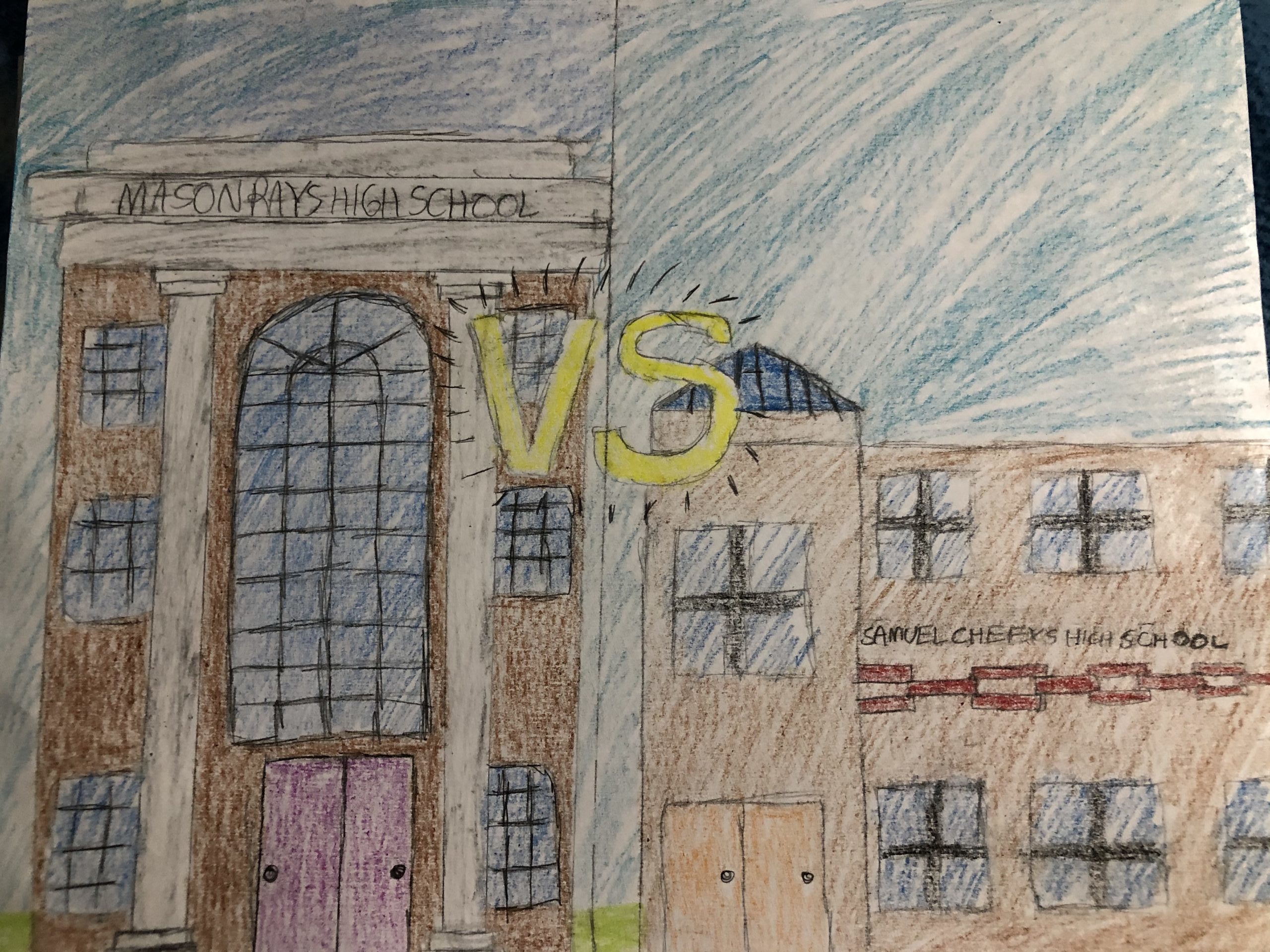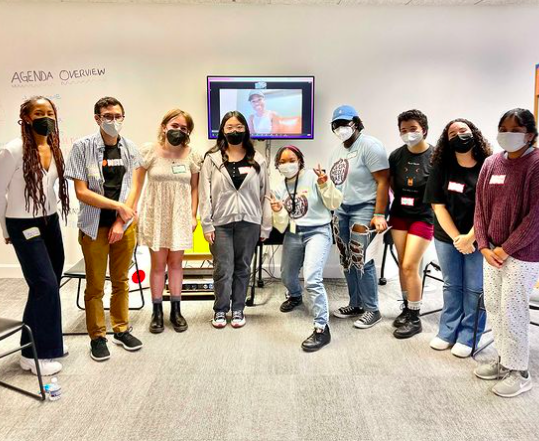By Samuel Cheeks, VOX Media Cafe Reporter
There is no doubt that the media can give us a perception and/or idea on how we say, act and think about a certain subject, topic or issue. For example, TV police shows portray cops as good people, who break the law only if they have to. When in reality, we see cases like George Floyd and Breonna Taylor, where the law was broken seemingly because of prejudice and personal gain.
The same thing often happens with our schools playing into the narrative that predominantly white schools are better academically and overall than predominantly Black schools. For that reason, many of the predominantly white schools tend to get more funding than predominantly black schools.
When looking at one of the best schools in metro Atlanta, Buford High School, is portrayed as a school of excellence. You can see that an exorbitant amount of funding was poured into this school. The campus physical appearance looks like a triple-A college campus. The classrooms don’t appear to be overcrowded. The layout of the school, the classrooms, the gym and amphitheater etc., are all top notch. All of this gives the impression that they are providing students with the very best education a student can achieve. On the other hand, nine times out of ten, predominantly Black schools are generally underfunded and labeled as poor or menial, at best. According to the United Negro College Fund’s K-12 Disparity Facts and Statistics Report, “African-American students are often located in schools with less qualified teachers, teachers with lower salaries.” The same report shows that on average “only 57% Black students have access to a full range of math and science courses necessary for college readiness compared to 71% of white students.”
Sadly, students in these schools are often told to suck it up, take the good with the bad and be grateful for the education they’re given.
How Jobs Affect Schools
Underfunding in black communities can really affect the education of black students. According to a 2019 study published by the U.S. Bureau of Labor Statistics, “In 2016 the median wealth for Black and Hispanic families was $17,600 to $20,700, respectively, compared with white families’ median wealth of $171,000.” This is due to a lot of the jobs that Blacks are given and/or able to have. When compared to Caucasians and Asians, African-Americans are second to last when it comes to management positions which can mean a lower pay salary. Often, they get stuck with positions or jobs that don’t pay as well. To answer the question of how this affects how schools are funded, schools are partially funded through property taxes. Since Caucasians are generally in higher management and higher paid positions, they can pour more funds into their schools through property taxes on their homes. This increases the chances for their children to get a better education. On the contrary, many African-Americans have to work much harder to get those higher paid positions, and receive less of an income which means they can’t pour into the schools as much as Caucasians can. Ultimately, this leaves predominantly black schools underfunded.
The Money Difference
In a 2016 report by the Washington Post, predominantly white schools receive $23 billion more funding than predominantly non-white schools. “For every student enrolled, the average non-white school district receives $2,226 less than a white school district.” Let’s use Arizona as an example. The report found that in Arizona, white districts receive “$7,613 more per student than those in non-white schools.” When asked how he’s seen the underfunding of black schools from his own personal experience, Adam Dickerson, 19, told VOX ATL his school consisted of “older buildings still in use, but never cleaned out” with pipes being fixed and other problems. Keyallah Majeed, 16, who attends Westlake High School, says she went to a school without “after care programs, technology, enough classrooms, and/or teachers.” Majeed also pointed out that white kids are often provided with a lot more courses to help them, while many Black students aren’t.
Jennie Matos, 14, who goes to the Lovett School in Northwest Atlanta told VOX ATL, she and her classmates have access to laptops, iPads, more teachers on staff and more access to college counselors boosting their chances to get into a good college. In contrast to Black schools she says, “There’s not enough teachers on staff, some don’t care and there’s not a lot of college counseling given and less access to technology.” Isabella Cavienss, 16, who goes to Westlake High says that predominantly white schools have more programming and activities for more kids. While her school has dancing, football and basketball it still needs programming dedicated to the arts like acting and film programs.
Redlining’s Role
However, we can’t solely blame underfunding on jobs and property taxes. Another factor is redlining. Redlining is the denial of various services by federal government agencies. Beginning in 1933, the federal government started a program “explicitly designed to increase and segregate America’s housing stock,” according to Richard Rothstein, the author of “The Color of Law,” a history of segregated housing in America. The policy really took effect in 1934 as banks started refusing to give loans to blacks to buy homes. At the same time, they built neighborhoods for whites, with the requirement that no homes in those neighborhoods could be sold to a Black person. For generations, banks have used redlining to block loans and other financial services to Black Americans, simply because of their skin color. So even if you are a Black man who has risen above the economic challenges and has a good amount of wealth, it is still hard to move your family out of the lower income neighborhood and get your children into a more desirable school. In 1989, the Atlanta Journal-Constitution won a Pulitzer Prize for its investigative series into redlining, “The Color of Money.”
How Does this Tie into Systemic Racism?
When VOX ATL asked teens how this ties into systemic racism, Jennie Matos says “It keeps black students at a disadvantage.” Often, the less funding at school is able to obtain means fewer resources, which can put the student on the wrong path, continuing the cycle, even putting some students on the school-to-prison pipeline. Adam Dickerson adds, “The educational system indirectly divides academic resources based on income and location when you pay attention to the historical development and integration in America’s communities.”
Since school lays down the foundation for your life, it is essential that schools equip their students with knowledge in all areas to help them get a good high paying job. However, funding plays a huge part in that.
Majeed says, “By limiting student’s accessibility to certain resources and essentials for education and development, they [end up] lacking in requirements needed for some opportunities.” If a white school has more funding, then they are better able to have the resources that expose their students to more subjects and resources, making them a more well-rounded student. Meanwhile, Majeed states most Black children “won’t have the full knowledge in a certain subject that would get them a good job.”
Solutions to Solve the Problem
The first thing we need to do to help solve this problem is to help those who don’t see this as a problem to see this as a problem. The second thing we need to do is get Congress involved. We also need to unite and find solutions. There is some good news. In a 2019 article, U.S. News & World Report, over 35 states are actively working to redistribute funding to make up for the wealthier school districts having more local funding than poor school districts.
Nevertheless there is still much work to be. Matos tells VOX ATL that “PTA committees need to speak up. With that money there needs to be more teachers, more access to technology and more facilities.” Dickerson went as far to say, “We need to refine the whole education system itself.”
If you look back on America’s history, we see throughout Reconstruction and the Jim Crow era, whites have always had nicer schools. Meanwhile Black childrens’ best opportunity at a grade-A education was one room schoolhouse that likely taught all grades. In a 2004 history of Jim Crow schools published by the American Federal Teachers Union, local school boards stretching from Texas to Colorado spent almost three times as much on each white student as they did on Blacks.
Ultimately, we need representation, elected officials who have seen the underfunding of schools first hand and who have graduated from an underfunded school. Dickerson said Congress needs to “make the effort to fund black schools or stimulate the economy of black community.” Matos says she would tell members of Congress, “Students in those underfunded schools are the future, too.” Majeed went to add, “the underfunding of schools in minority communities is related to the ongoing institutionalized oppression. In order to make this country what it was originally formed to be, we must stop systemic racism starting with the youth.”
We Must Come Together
While we might live in one of the greatest countries in the world, there are a lot of problems with race we’re going to have to deal with. While we’re looking at racism in everything from our sports and television shows, we also need to examine the racism that exists inside the places that educates us about slavery, Jim Crow and the American Revolution — our schools. We need to recognize the schools that poorer students attend, come together as a human race and help them out.
VOX Media Cafe reporter Samuel Cheeks 15, attends Arabia Mountain High School.




